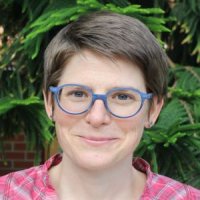Iva Mozgová

I am a group leader at the Biology Centre of the Czech Academy of Sciences in Ceske Budejovice. My independent group was established in 2019, funded by Lumina quaeruntur, a start-up fellowship from the Czech Academy of Sciences, and also by the ERC-Czech grant, which covers ERC applications that are not funded for budgetary reasons. We are interested in two main questions – first, how PRC2 contributes to operational control in cells and second, how PRC2 has evolved in the green lineage.
Education
2007 – 2011: PhD in Molecular and Cellular Biology, Masaryk University and CEITEC, Brno, CZ (PhD thesis: “Nucleoprotein Structures of Telomeres”, Supervisor: Jiří Fajkus 2001 – 2007: MSc in Molecular Biology and Genetics, Masaryk University, Brno, CZ
Employment
2019 - now: Junior Group Leader, Biology Centre CAS, v.v.i. (IPMB), České Budějovice, CZ 2017 - now: External Lecturer, University of South Bohemia in České Budejovice (USB), CZ (0.1 FTE) 2016 – 2018: Independent researcher, Institute of Microbiology CAS (Centre Algatech), Trebon, CZ 2011 – 2016: Postdoc, Lars Hennig group, Swedish University of Agricultural Sciences (SLU), Uppsala, Sweden (SE) (2012 - 2014: EMBO Long-Term Fellow, Lars Hennig group, Swedish University of Agricultural Sciences (SLU), Uppsala, Sweden (SE))
Selected publications from PhD and postdoc
Svedberg J, Hosseini S, Chen, J, Vogan AA, Mozgová I, Hennig L, Manitchotpisit P, Abusharekh A, Hammond TM, Lascoux M, Johannesson H. 2018. Convergent evolution of complex genomic rearrangements in two fungal meiotic drive elements. Nature Communications 9(1): 4242. doi: 10.1038/s41467-018-06562-x PubMed
Mozgová I, Wildhaber T, Trejo-Arellano MS, Fajkus J, Roszak P, Köhler C, Hennig L. 2018. Transgenerational phenotype aggravation in CAF-1 mutants reveals parent-of-origin specific epigenetic inheritance. New Phytologist 220(3): 908-921. doi: 10.1111/nph.15082 PubMed
Muñoz-Viana R, Wildhaber T, Trejo-Arellano MS, Mozgová I, Hennig L. 2017. Arabidopsis Chromatin Assembly Factor 1 is required for occupancy and position of a subset of nucleosomes. Plant Journal 92(3): 363-374. doi: 10.1111/tpj.13658 PubMed
Derkacheva M, Liu S, Figueiredo D D, Gentry M, Mozgová I, Nanni P, Tang M, Mannervik M, Köhler C, Hennig L. 2016. H2A deubiquitinases UBP12/13 are part of the Arabidopsis polycomb group protein system. Nature Plants 2(9):16126. doi: 10.1038/nplants.2016.126 PubMed
Mozgová I, Wildhaber T, Liu Q, Abou-Mansour E, L’Haridon F, Métraux J-P, Gruissem W, Hofius D, Hennig L. 2015. Chromatin assembly factor CAF-1 represses priming of plant defence response genes. Nature Plants 1(9):15127. doi: 10.1038/nplants.2015.127 PubMed
Mozgová I, Köhler C, Hennig L. 2015. Keeping the gate closed: Functions of the Polycomb repressive complex PRC2 in development. Plant Journal 83(1):121-132. doi: 10.1111/tpj.12828 PubMed
Mozgová I, Hennig L. 2015. The Polycomb Group Protein Regulatory Network. Annual Review of Plant Biology 66(1): 269-296. doi: 10.1146/annurev-arplant-043014-115627 PubMed
Derkacheva M, Steinbach Y, Wildhaber T, Mozgová I, Mahrez W, Nanni P, Bischof S, Gruissem W, Hennig L. 2013. Arabidopsis MSI1 connects LHP1 to PRC2 complexes. EMBO Journal 32(14):2073-2085. doi: 10.1038/emboj.2013.145 PubMed
Mozgová I, Mokroš P, Fajkus J. 2010. Dysfunction of chromatin assembly factor 1 induces shortening of telomeres and loss of 45S rDNA in Arabidopsis thaliana. Plant Cell 22(8):2768-2780. doi: 10.1105/tpc.110.076182 PubMed
Mozgová I, Schrumpfová PP, Hofr C, Fajkus, J. 2008. Functional characterization of domains in AtTRB1, a putative telomere-binding protein in Arabidopsis thaliana. Phytochemistry 69(9): 1814-1819. doi: 0.1016/j.phytochem.2008.04.001 PubMed